|
Referring Patients to SETMA’s Infusion Center,
particularly for Outpatient Intravenous Antibiotic Therapy
SETMA’s Infusion Center has the potential to improve the quaity of services we provide to our pateints and to decrease the cost of that care. Whether it is for the success of our Medicare Advantage program or the improvement of SETMA’s Cost and Resource Utilization in regard to Merit-Based Incentive Payment System (MIPS) the decrease in the cost of our care is an important goal.
A Review of SETMA’s Medicare Fee-for-service Results of CMS Quality Resource Utilization Report (QRUR) for the First Half of 2015 (for review of complete evaluation see: http://jameslhollymd.com/Letters/requirements-of-the-medicare-access-and-chip-reauthorization-act) shows that there are three groups of patients where our Rate of Admission is higher than the benchmark against which we are measured. They are:
- bacterial pneumonia,
- urinary tract infection and
- dehydration.
With a 15-20% decrease in our rate of admission for these three categories, our rate and our cost will fall below the benchmark and improve our CMS-Calculated Quality Outcome Measure Performance. Our rates of admissions for Diabetes Related Admissions, COPD and CHF are already below the benchmark.
As is obvious, bacterial pneumonia, urinary tract infections and dehydration are diagnoses which often affect residents of long-term -care facilities. SETMA treats over 1,700 patents in those facilities accounting, we believe, for our rate of admissions per 1,000 fee-for-service Medicare patients being higher than expected.
However, rather than trying to explain away the data, SETMA has deployed an ability to provide high quality and safe services without having to admit these patients to the hospital. The following explanation will walk you through how to efficiently enroll patients from the emergency department, in-patient hospital or ambulatory setting in the infusion center. This will enable SETMA to decrease our rate of admissions, decrease our cost of care and to do so with excellence.
Referrals to SETMA’s Infusion Center, whether from the ER, in-Patient or Ambulatory care begins at SETMA’s electronic patient management tool for Referrals. Beginning at the AAA Home Template in the EMR go to the button outlined in green below entitled Diagnostic Referral Order.
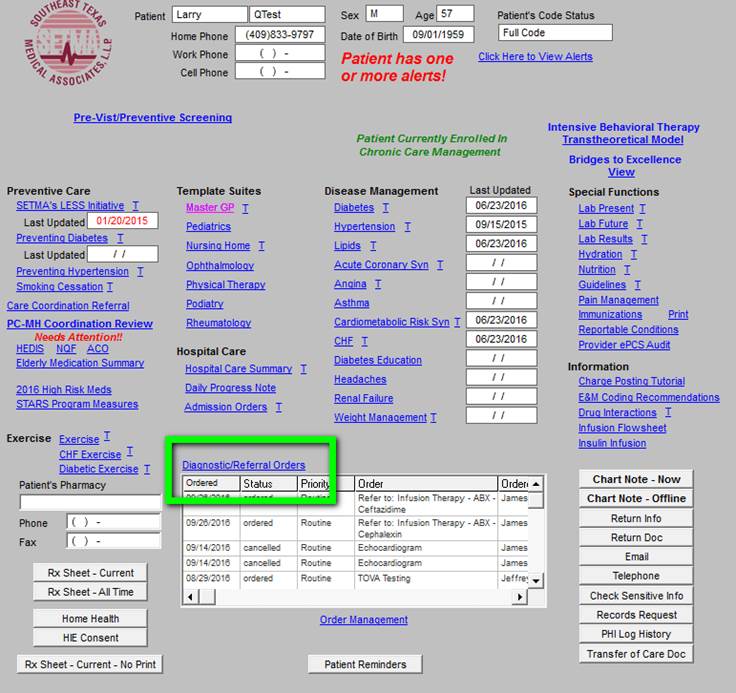
Once you click on the above, the following referral template will appear. In order to complete a referral to the Infusion Clinic, you may select (click) on a diagnosis in the Acute or Chronic Conditions lists to support your referral. See below:
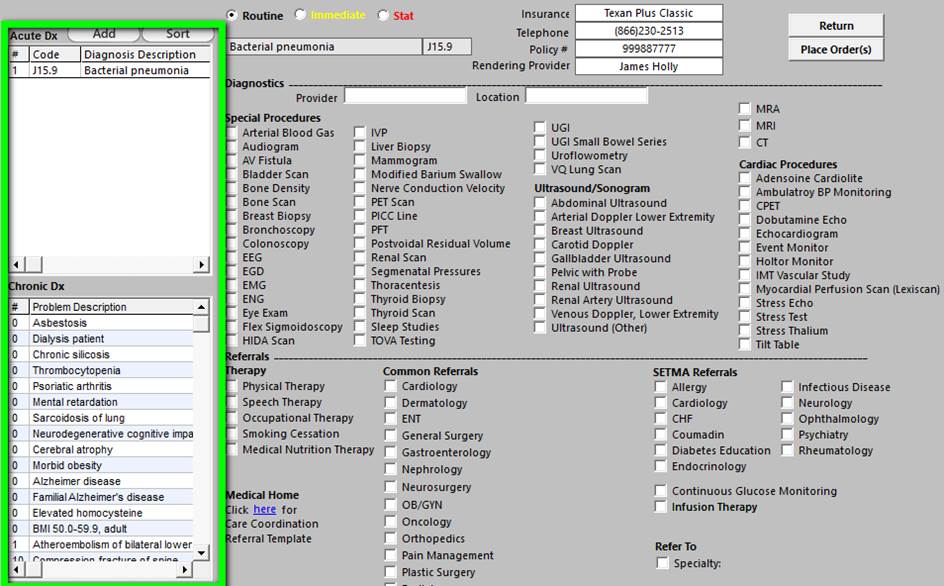
To populate the referral diagnosis, you may also click “Add” to enter a diagnosis not already in the acute or chronic list.
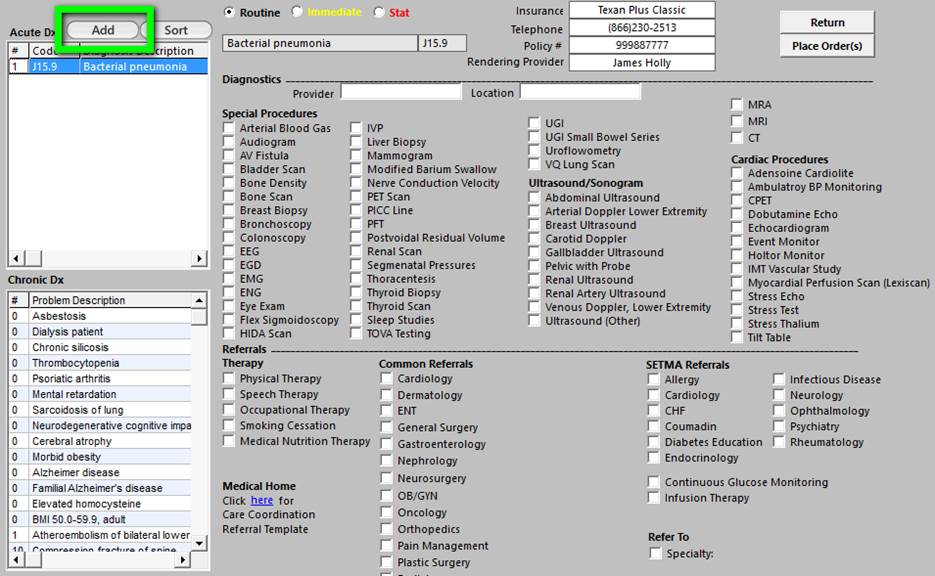
Once you have selected a diagnosis, it will populate the diagnosis box. See the box outlined in green below.
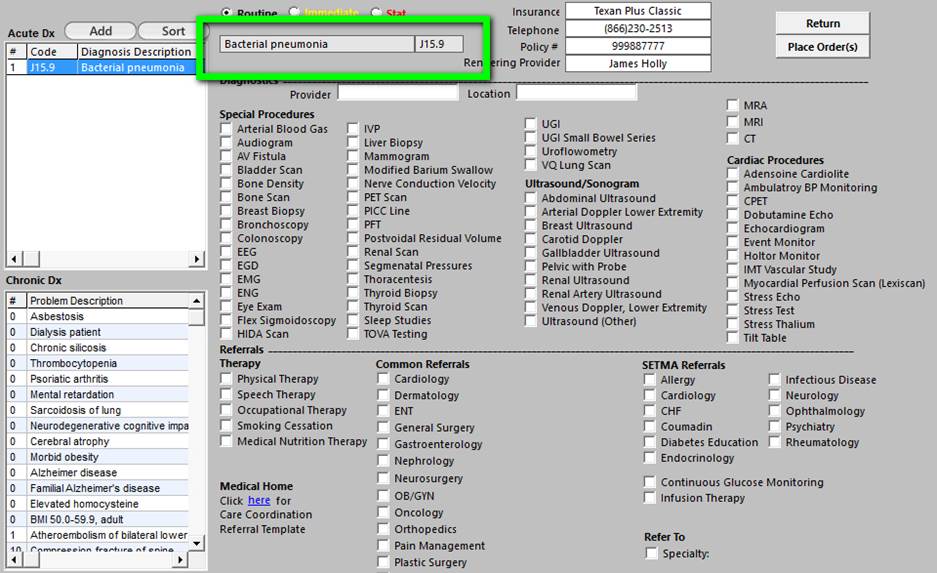
Once the diagnosis and the Provider and Location functions are completed, you must select the “Infusion Therapy” checkbox. See the box outlined in green below.
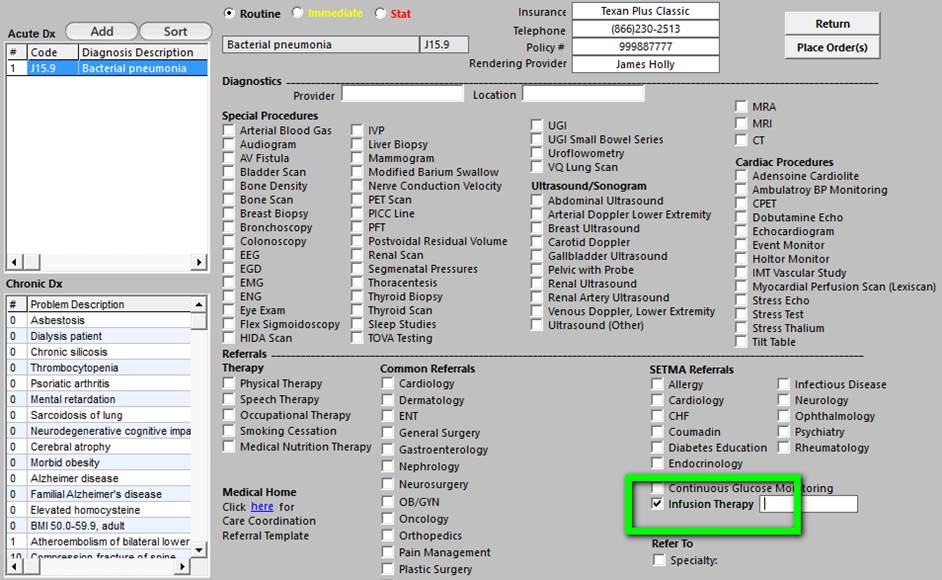
A list of available antibiotics or other drugs for infusion will appear. Select the one you would like to use for the referral.
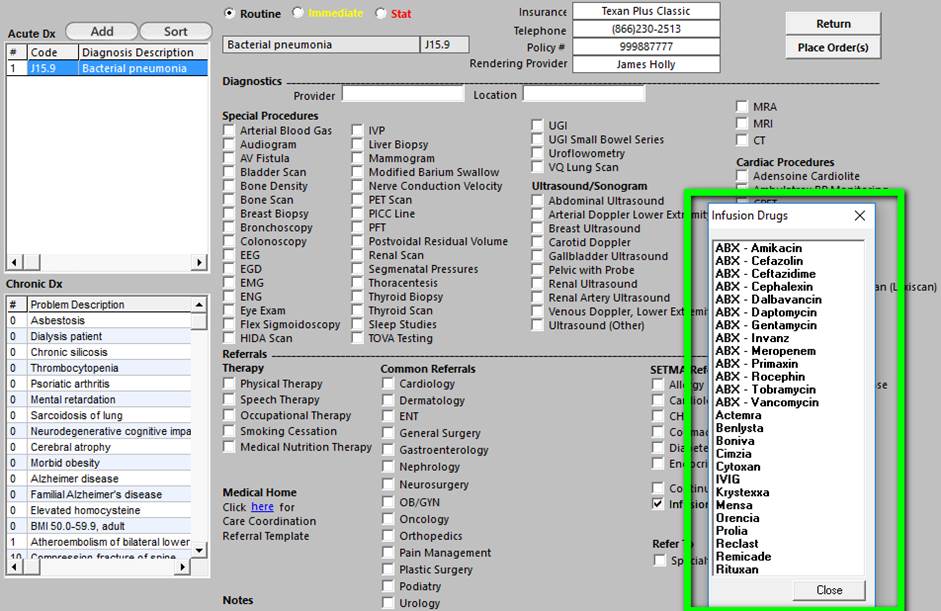
Click the “Place Order(s)” button.
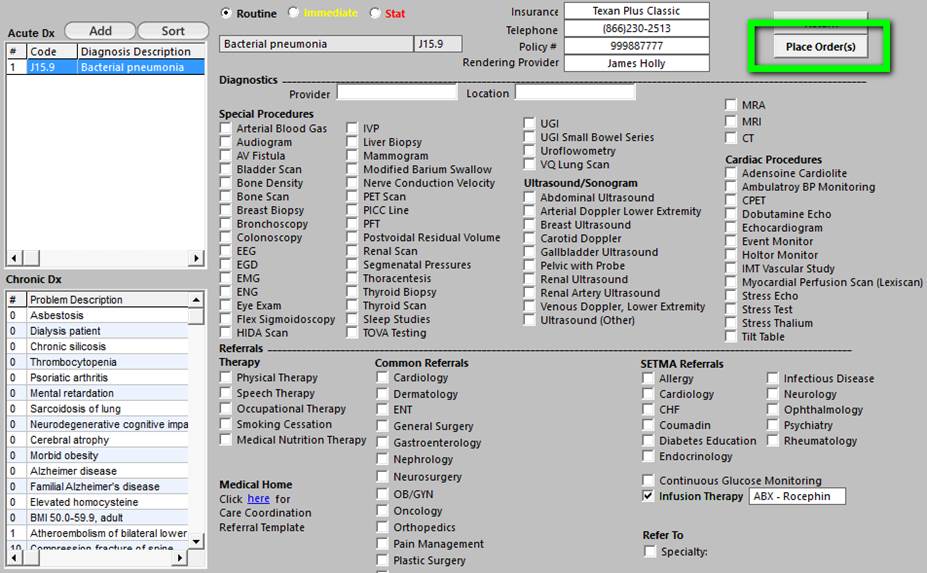
The task window will appear to send the referral to the Infusion department. If you would like to add additional recipients, you may do so. Otherwise, click “OK” to save and send the referral.

Once you are familiar with this process and when you are working from the EMR, the process for referral patients to the Infusion Center will take less than one minute.
Because the timing of these referrals is so critical, the referral does not go to the referral department but directly to the Infusion Center which is committed to responding immediately to the request.
|